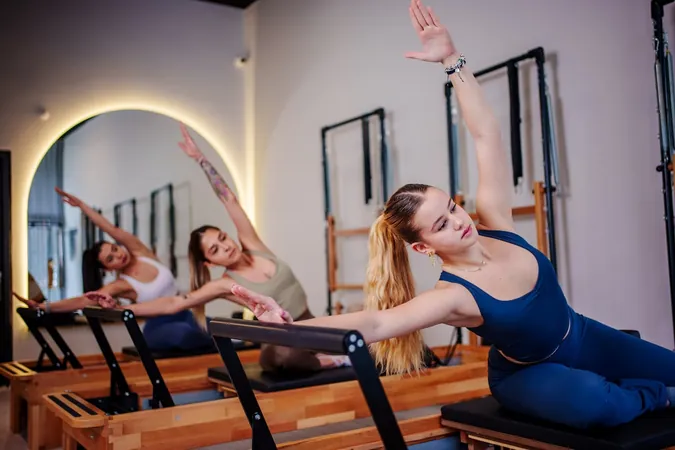
Why Men Find It Hard to Fit In at Pilates Studios
2025-06-17
Author: Sophie
The Unlikely Gender Divide in Pilates Studios
Reformer Pilates has become synonymous with a serene, yet exclusive atmosphere, often dominated by women in leggings flowing through synchronized movements. For many dedicated female practitioners, known as "Pilates girlies" on social media, the studio feels like a sanctuary—one that can feel disrupted by the presence of men.
A Brief History of Pilates
Ironically, Pilates was born in wartime, developed by Joseph Pilates in prisoner-of-war camps. That legacy transformed when he opened his first New York studio next to ballet companies, attracting dancers who were sent for rehabilitation. Over time, Pilates evolved into a feminine workout, focusing on traits like flexibility and core strength.
Men Join the Movement, But Not Without Hesitation
Recently, high-profile athletes like Cristiano Ronaldo, David Beckham, and LeBron James have praised the benefits of Pilates, igniting new interest among men. Yet for many women, this influx feels like an unwelcome intrusion into their familiar environment. Sarah Ferland, a trauma therapist in Toronto, suggests that the intimacy of Pilates sessions, combined with the close physical positions, creates an uncomfortable atmosphere for women when men are present.
Women Speak Out on Social Media
TikTok has become a hotbed for women expressing their unease regarding male participants in Pilates classes. This sentiment stems from a history where women have faced the male gaze and unsolicited comments in traditional gym spaces, pushing them towards seeking refuge in women-centric environments.
A Need for Safe Spaces
As Taylor McKee, a sport management professor, points out, it’s disheartening that such safe havens are necessary. Many women view these spots as essential for their comfort, especially as studies indicate a significant percentage of women receive unwanted remarks in mixed-gender gym settings.
Cultural Expectations Shape Gym Preferences
Cultural conditioning plays a role in why men may be drawn to more traditional, muscle-centric workouts while women gravitate towards Pilates, which promotes a toned aesthetic rather than bulk. Dr. Raza Awan, a sports medicine physician, reflects on his own hesitance to join Pilates due to its female-centric reputation—an experience he found isolating until he eventually embraced the practice and began teaching.
Bridging the Gap: Studios Adapt to Draw Men In
In response to the growing recognition of men in Pilates, studios are adapting their offerings. Coco Reformer Pilates in Toronto is introducing mobility-focused classes, while Ariel Swan of Jaybird Studio emphasizes a non-judgmental atmosphere designed to welcome newcomers, including men.
Changing the Tone: Behavior Matters
Although there are calls from some women to restrict men from Pilates, the consensus is that behavior, not gender, is the true challenge. Attention to personal space and considerate interactions can ease tensions, as many agree that inclusivity benefits everyone in these fitness spaces.
A Call for Inclusivity and Understanding
Ultimately, as Pilates continues to attract a more diverse following, the emphasis should be on creating an environment where all bodies feel comfortable and safe. As Pilates enthusiast Priya Gill states, all individuals deserve the right to fitness in a welcoming space.









 Brasil (PT)
Brasil (PT)
 Canada (EN)
Canada (EN)
 Chile (ES)
Chile (ES)
 Česko (CS)
Česko (CS)
 대한민국 (KO)
대한민국 (KO)
 España (ES)
España (ES)
 France (FR)
France (FR)
 Hong Kong (EN)
Hong Kong (EN)
 Italia (IT)
Italia (IT)
 日本 (JA)
日本 (JA)
 Magyarország (HU)
Magyarország (HU)
 Norge (NO)
Norge (NO)
 Polska (PL)
Polska (PL)
 Schweiz (DE)
Schweiz (DE)
 Singapore (EN)
Singapore (EN)
 Sverige (SV)
Sverige (SV)
 Suomi (FI)
Suomi (FI)
 Türkiye (TR)
Türkiye (TR)
 الإمارات العربية المتحدة (AR)
الإمارات العربية المتحدة (AR)